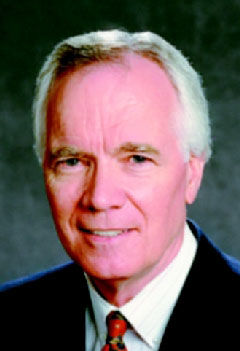
Lafourche Parish Sheriff Craig Webre walking tall
May 21, 2015Breaking: Platform fire in Gulf
May 22, 2015Prices at the gas pumps are rising, and that’s good news for local maritime workers.
No one could have foreseen the latest plummet, according to economist Loren Scott, but signs are the cost per barrel of oil is rising-slowly, but rising nonetheless.
“The good news is the rig count has basically held it’s own in the United States,” Scott said. “Work has slowed in the [Gulf of Mexico], but nothing like what we’ve seen in the rest of the country.”
The hardest hit, Scott said, is activity in shale plays.
“I don’t think what we’re seeing now is at all the shape of things to come,” he explained. “I taught forecasting for 31 years at Louisiana State University and I’ve never seen anything like this.”
America’s movement toward shale exports and fracking in general may have played a part in the price shift, Scott theorizes.
With U.S. imports significantly dropping and gas-related product exports on the rise, the economist believes the nation’s activity caught the attention of OPEC (Organization of the Petroleum Exporting Countries), leading to the price fallout.
“You never know what the Middle East is going to do, but I don’t think this move was profit-related,” Scott said of the price drop. “That’s what makes it a very difficult thing to forecast.”
In recent years, the United States has seen its oil imports fall from 60 percent to 30 percent, cutting significantly into the Saudi’s export business.
When the Department of Commerce agreed in August 2014 to allow the exportation of crude oil products, the result incensed OPEC leaders.
“First, we cut into the U.S market,” Scott explained, noting the drop in oil imports. “Now, we’re starting to cut into the international share.
“That drove the price of oil down… and fast.”
Because plays are generally profitable for a short period of time, Scott said fracking is not likely a long-term replacement for drilling, which is good news for south Louisiana.
“Unlike in the gulf, where a rig can remain active for years, shale plays draw a lot of oil the first two years,” he said. “They generally drop remarkably after that. It is as much as 65 percent. That’s a pretty great drop.”
Gulf activity is rebounding since the 2010 slowdown in the aftermath of the BP Deepwater Horizon incident. Approximately 33 rigs were active in the gulf before the spill; 11 remained active after the spill.
“Today, we’re headed toward 60 rigs actively drilling in deep water,” Scott said. “People are coming back to the gulf. And the good news is we’ve had some ‘elephant’ finds.”
Chevron is drawing as much as 130,000 barrels of oil daily at Gulf sites, where a fracking well may draw as little as 1,300 barrels a day.
With active shale plays dropping off, Scott said he expects the prices to continue drifting back up
“You’ve got to believe the Saudis are watching what happens,” he said.
Where local oil and gas and maritime service-related companies have been hit hardest is in price cuts from the bigger players in the industries.
“Companies that were earning more per barrel are seeing their prices drop. They’re having to go back and renegotiate prices with service-related companies,” Scott said. “That’s putting the squeeze on the local guys, too. That’s why we’re hearing talk of layoffs.”
While Saudi Arabia can withstand a price drop, the 10 other OPEC nations rely heavily on oil to keep their governments afloat-good news for America.
“We’re not expecting the prices to return to the highest figures we’ve ever experienced, but I expect we will see oil prices close to the $70 or $80 (per barrel) mark by the end of the year.”
LOREN SCOTT
A cargo vessel makes its way through waters. Despite low oil prices, our area remains strong.









